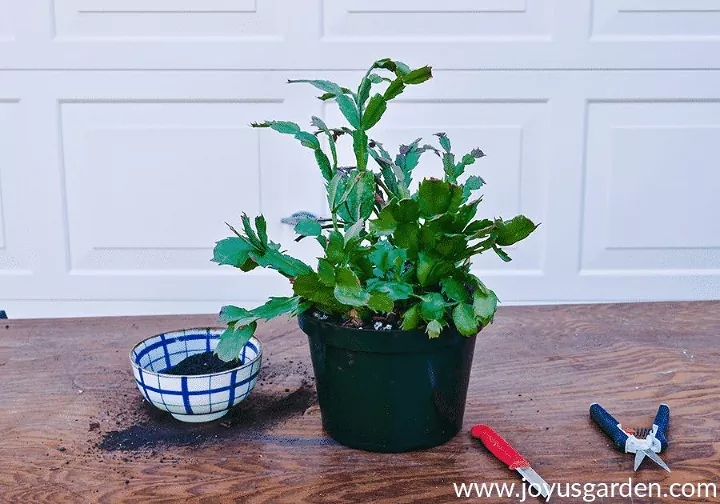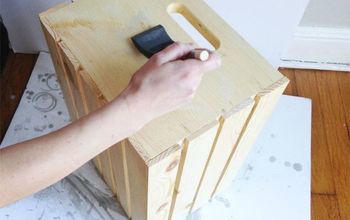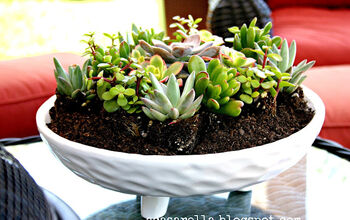How to Care for Christmas Cactus and Get It to Bloom

By Alexa Erickson
A favorite holiday plant, Christmas cactus is named for its timely bloom around the holidays. The succulent, a plant in the Schlumbergera family, features branching stems of glossy green, with flat, broad, tooth-edged sections. Meanwhile, the tips of the plant present long flowers when in bloom, usually in red or pink. Widely cultivated as houseplants, Christmas cacti require specific care to encourage blooming.
Here’s what you need to know about caring for Christmas cactus, from picking a healthy cactus to getting it to rebloom.
Photo via Louise
How to Pick a Healthy Christmas Cactus
A healthy Christmas cactus will display strong, upright, green stems and a moist, shiny and ribbed surface.
One of the biggest issues to look out for when picking a healthy Christmas cactus from your local gardening center is root rot, a fungal disease the plant is susceptible to when it’s overwatered. While at home you can remove the plant from its pot and inspect it yourself, telltale signs on the plant’s exterior include wilted, limp, sagging growth of its foliage. If you can take a look at the roots, check for blackened tips and, in severe cases, a slimy feeling when you touch them.
While overwatering causes root rot, underwatering results in a shriveled-up appearance of the plant. Avoid choosing one that has wrinkles on its leaves, particularly towards the base of the plant.
Photo via Joy Us garden
How to Repot a Christmas Cactus
Christmas cactus prefers to be repotted right after it’s done blooming — typically by the end of January up to early February. The plant should be repotted every three to four years, as its roots will start to bound in its pot if you wait longer than that. More signs that the plant might be ready for a new pot include:
- The plant starts to get top-heavy
- Growth slows despite no environmental or care changes
- Mold is visible on the soil
- Leaves are browning and falling off
Here’s how to repot a Christmas cactus when the time comes.
Tools and Materials Needed
- Clay pot with drainage holes, 1-2 inches bigger in diameter than the previous pot the plant lived in
- Succulent potting mix
Step 1: Remove Plant From Old Pot
Gently turn the pot holding the Christmas cactus on its side. Holding the base, slowly slide the plant out of the pot.
Step 2: Massage the Root Ball
Once removed from the old pot, massage the root ball to loosen it up. Use your hands to slightly tease the roots, letting some of the dried soil shake free.
Step 3: Add Potting Mix to New Pot
Fill the new pot about a third of the way full with succulent potting mix, then place the root ball in the pot. Add additional potting mix over the root ball until it’s filled to about one inch below the container’s rim. Use your palm to pat down loose soil.
Step 4: Water the Cactus
The roots will be tender in their new pot, and will likely have a difficult time absorbing water. To avoid root rot, water moderately for one to three weeks after repotting, or allow the top inch or so of soil to dry between waterings.
How to Care for Christmas Cactus
Although special care is required for blooming, the Christmas cactus is otherwise a hardy plant that requires minimal care. The plant is native to the tropical rainforests of southern Brazil, where it grows on tree branches, so naturally, the cactus thrives in high humidity with warm temperatures and indirect sunlight. To mimic such conditions, take note of the following tips on how to care for Christmas cactus.
Sunlight
Replicate similar light conditions of the rainforest by providing your Christmas cactus with bright but indirect sunlight by keeping it near a window indoors or shaded by trees in the summer months.
Water
Christmas cacti appreciate being watered thoroughly but do not like having wet feet. To avoid root rot, be sure the top inch of the soil is dried out between waterings. Plan to water every two to three weeks, and only if the soil feels dry to the touch. When watering, soak the soil until water runs through the pot’s drainage holes.
Fertilizer
You can feed your Christmas cactus once the active growing season begins. From spring through early fall, feed every two weeks using a balanced houseplant fertilizer and in the fall and winter, feed the cactus monthly to promote flowering.
Maintenance
Prune your Christmas cactus right after it blooms and the flowers have wilted. Pruning the plant will force it to branch out, making for more beautiful stems and flowers next blooming season. To prune, simply use your hands to twist the stems of the cactus between one of the segments or use a sharp knife or scissors to remove the segments. And if your Christmas cactus is getting leggy and needs a haircut, you can safely remove up to one-third of the plant per year.
Pests and Diseases
Healthy Christmas cacti are unlikely candidates for pests and diseases—just be sure to avoid overwatering, use proper potting soil, and keep the plant in indirect sunlight.
If your plant appears unhealthy, you may have pests or diseases. An unhealthy plant can be recognized by slow growth, mushy stems, wilting, and yellowing or distorted leaves.
The most common pest culprits to look out for include aphids, fungus gnats, mealybugs, red spider mites, soft brown scale, thrips, and whiteflies. The best way to get rid of such pests is to spray the foliage on the plant with the sprayer attachment on your kitchen sink, let the foliage dry completely, then spray neem oil on the plant.
If the soil is too wet, you may come across various diseases that cause fungus and mold around the plant. Common visual indicators of this include:
- Damping off (weakened or dying) young plants
- Black stems
- Leaf wilt and dieback
- Dark, soggy roots
You can save the cactus by removing it from its container, trimming away affected roots, and rinsing the remaining roots gently to remove the fungus. Allow the roots to air dry overnight on a paper towel, then repot using the steps we gave above.
Photo via Jeanne Grunert
How to Get a Christmas Cactus to Rebloom
Christmas cacti are provoked into bloom by the cooler temperatures and longer nights of fall and winter. To encourage your cactus to bloom annually, the plant should be in darkness for 14 hours a day, beginning six to eight weeks before you want it to bloom. Avoid keeping the plant in an area where artificial indoor/outdoor lighting is on for long periods after dark for this reason.
To further encourage flower buds, place the plant in an area where temperatures hover between 50 and 60 degrees Fahrenheit. Finally, be consistent with your watering schedule. Don’t let the plant dry out too much.
Do you own a Christmas cactus? When does your plant typically bloom?
Enjoyed the project?
Comments
Join the conversation
-
 Sharon Jorgensen
on Feb 10, 2024
Sharon Jorgensen
on Feb 10, 2024
Mine blooms around Easter.
-
-
 Noreen
on Feb 28, 2024
Noreen
on Feb 28, 2024
My Christmas Cactus blooms between October and Thanksgiving, depending on how early it gets cold. I take mine out in the summer and bring it in when night Temps get around 40F. It started in a 2-3 inch pot and now is in about a 2 foot diameter pot. I have also rooted cuttings and given them away.
-


























Frequently asked questions
Have a question about this project?